GasPatch Models | Turnbuckles
Reviewed by Eric Galliers
GasPatch Models has just released new metal turnbuckles which are an excellent addition to any model requiring rigging. They are made of metal and quite finely detailed. They are perfect for use with the many WW1 aircraft that are now on the market, and I believe they will revolutionise the way that a modeller approaches one of the harder tasks of modelling WW1 aircraft. I am reviewing the 1/32 scale parts and they are also available in 1/48th scale as well. At the time of writing, they are priced at 14.50 Euro per pack of 30 turnbuckles.
They are available from this website: http://www.gaspatchmodels.com/accessories/.
I received the 3 different types that have been released and will be using them to complete my Wingnut Wings Pfalz DIIIa, as per this thread: http://forum.largescaleplanes.com/index.php?showtopic=41405.
Here is the packaging, please note that all 3 types have been included in the one package. The turnbuckles come as a `tree' of 30 buckles each, and can be detached with side cutters, or with tweezers as shown in the instructions.
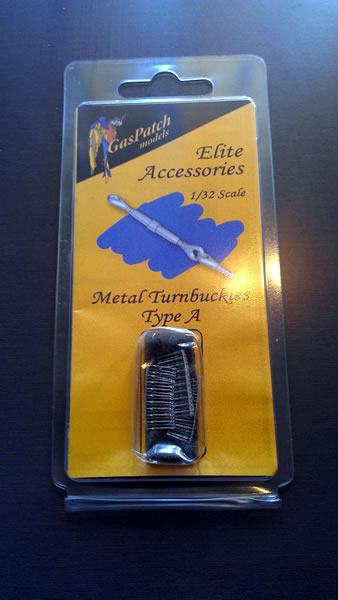
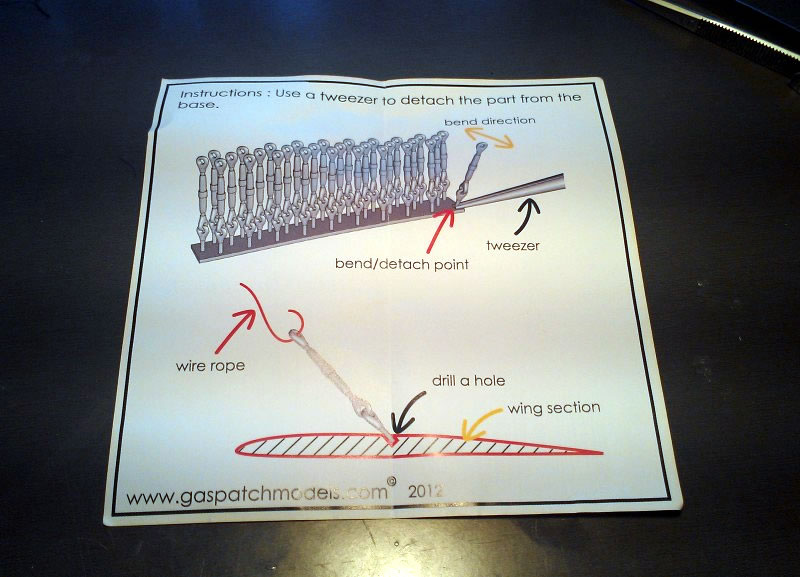
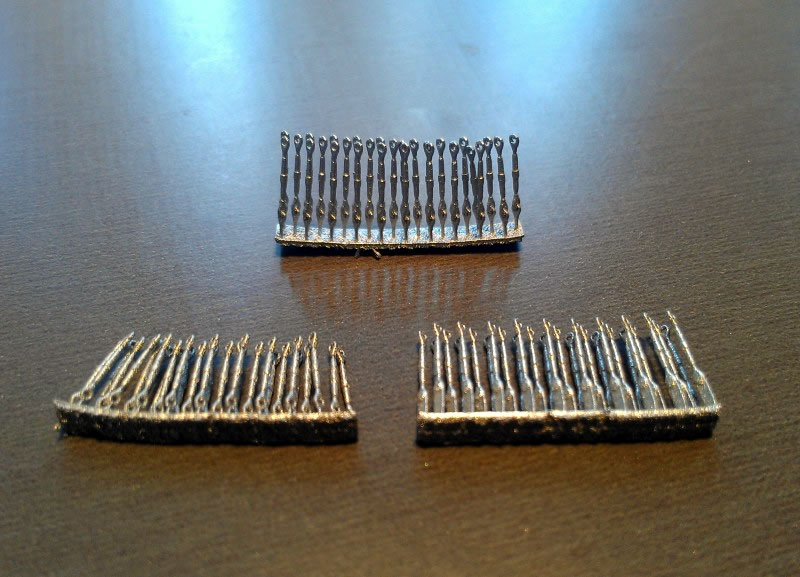
The three different types of turnbuckle are shown here. I have shown them next to a No.11 blade so that a sense of scale can be seen. Upon closer inspection, it can be seen that they are layered as if manufactured with 3D printing technology. Despite this, the turnbuckles are extremely well made and are quite exquisite in their detail and are very realistic. I have determined that all three types could be used across the range of different aircraft as they all served a different purpose. I am of the opinion that type A will be the most widely used unit, and it is the one that I have used the most of in my Pfalz DIIIa build so far.
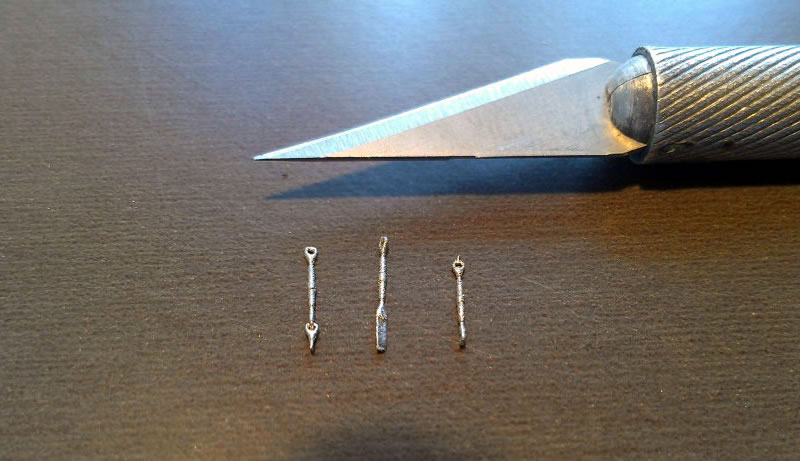
I have threaded a common rigging thread (EZ LINE) through the eye of one of the buckles. A steady hand will be required here but the results will be well worth the effort.
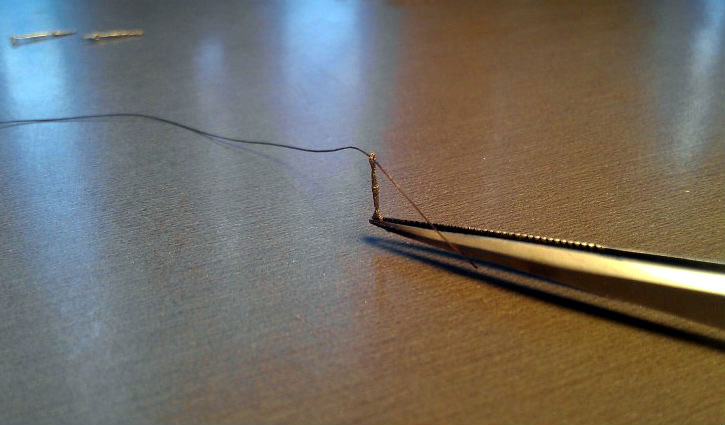
I would highly recommend this great new product.
Eric Galliers December 2012
© Eric Galliers 2012
This review was published on Saturday, December 29 2012; Last modified on Wednesday, May 18 2016
